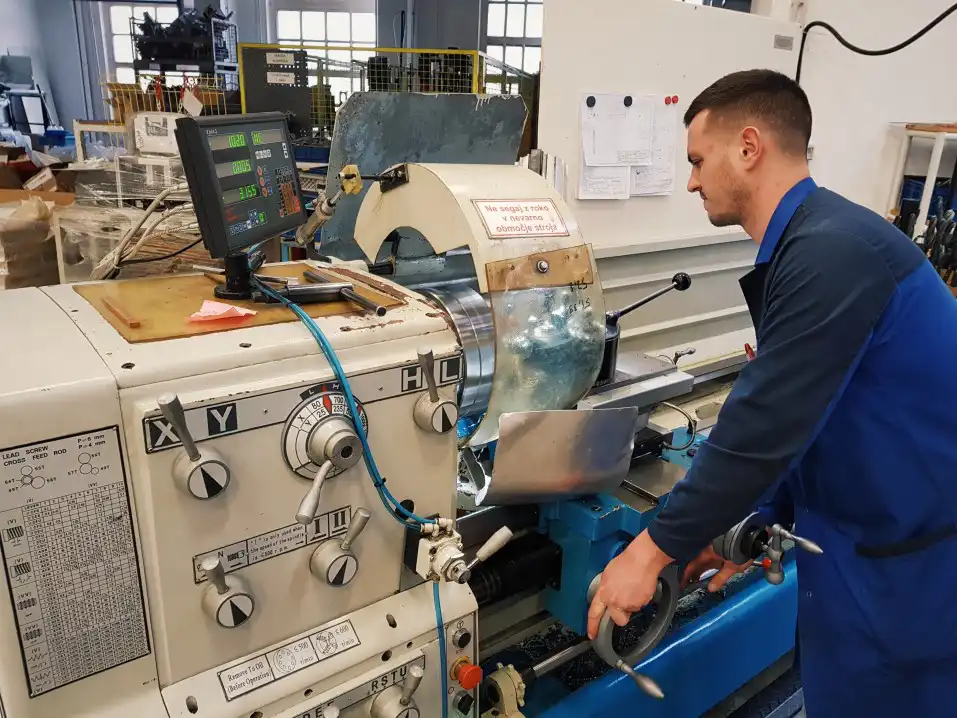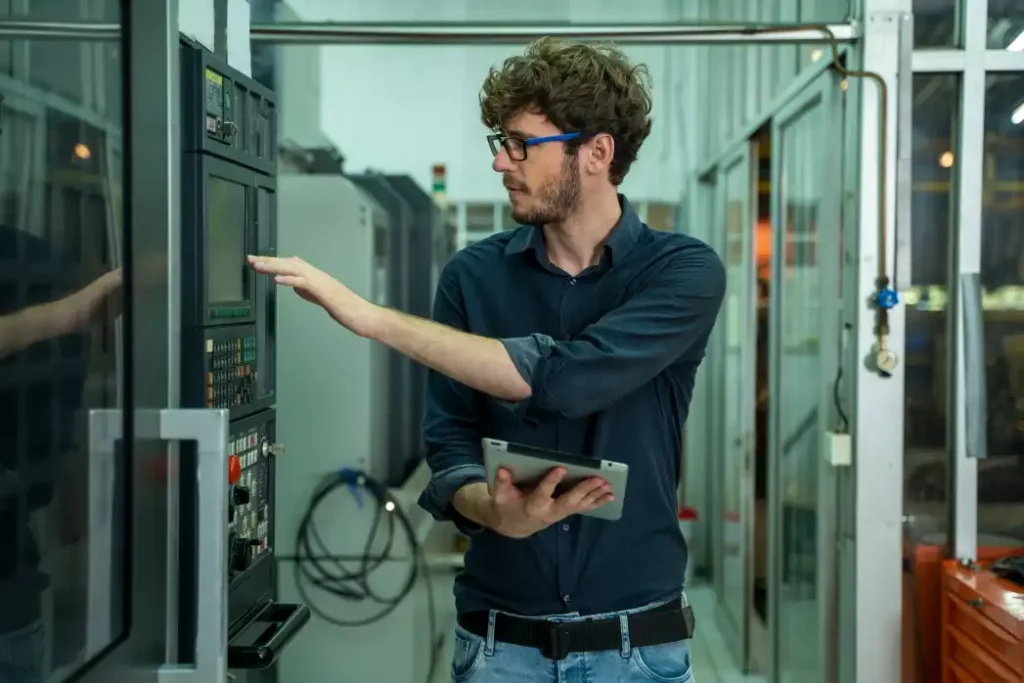What is CNC Preventive Maintenance
Preventive maintenance (PM) maintains equipment and assets regularly to keep them functioning and avoid costly unscheduled downtime due to unexpected equipment breakdown. Preventative maintenance saves time and money by ensuring that the unit is working at its best.
A successful maintenance strategy necessitates the planning and scheduling equipment repairs before a problem arises. A well-thought-out preventative maintenance plan can help you discover minor issues before they become severe.

Why is it important
Machinery such as lathes, milling machines, and multi-axis machining centers frequently perform multiple machining jobs. These cutting, shaping, and drilling jobs are challenging to complete and require specialized software and hardware. To meet the technical manufacturing needs of factories, they require long continuous production periods that can last days and nights.
Due to the high-performance levels and extended hours of working and cutting required for various metal parts and components, frequent and proactive maintenance is necessary. And this will ensure that your CNC machine tool lasts longer and remains usable while retaining the accuracy and quality of your produced products.
Fluid levels in CNC machines, such as lubricant and hydraulic fluid, must be sufficient. Working with your machines will give you a solid idea of how often the fluids need replacement. Have your appliances serviced if they begin to use juice at a higher rate? Excessive fluid consumption can indicate an issue.
Customized routine maintenance
When it pertains to preventive maintenance requirements, each facility will be unique. Schedule your maintenance duties not just according to OEM recommendations but also according to the actual utilization of your facility. If you have a set of mission-critical machines that run 24 hours a day, schedule preventive and equipment maintenance regularly. Appliances that are rarely utilized, on the other hand, may only need to be inspected once in a while.
Consider levels of skill and other priorities if you have internal staff. You might want to think about your labor pool as well. You’ll have to work around the availability of an outside maintenance provider if you use one.

Care daily
- Make sure the hydraulic pressure stays at 4.5 MPa.
- You should check Hydraulic fluids.
- Check the chuck pressure and oil.
- Check the lubrication level and ensure it’s at the right level for operation.
- Always remove Chips.
- Clean the door’s window.
- Stainless steel covers should be cleaned and lubricated with hydraulic oil.
Care for three months
- Examine and lubricate the chip conveyor chain.
- The coolant tank’s filters should be checked, cleaned, or replaced.
Care for six months
- Always clean the Coolant.
- Remove the chuck and clean the jaws.
- The hydraulic tank should be drained, cleaned, and applied with the hydraulic oil.
- Replace the suction and line filters.
- Straighten the radiator fins and clean the radiator.
- Drain and clean the lubrication unit, then re-lube it.
- Drain, clean, and refill the cooling system
- Check and adjust the leveling of your machine.
- Wiper blades should be inspected, cleaned, and replaced as needed.
A one-year examination
- Check for the taper on the headstock.
- Check for radial and end play on the spindle.
- Check for runout in the chuck cylinder.
- Check for the taper on the tailstock.
- Check the parallelism and inclination of the turret.
- To verify the backlash in the X and Z axes, run the backlash software.
- Check and adjust the gibs on the X and Z axes.
Tips for CNC Machine Preventive Maintenance
A regular servicing program boosts productivity, sustains throughput, and boosts efficiency dramatically. The dependability of machinery and hardware is crucial in manufacturing for optimal performance and production.
When manufacturing devices are custom-developed and hence too expensive to fix or replace, disruption might reduce total output. Here are some pointers on using preventive maintenance to get the most out of your CNC machine.
Set maintenance to correspond with equipment requirements: Prevent machine malfunction by scheduling maintenance ahead of time. When it doesn’t disrupt production, exercise extra caution.
To save money and resources, you should base the maintenance schedule on the machine’s usage patterns and availability.
Create a worker inspection system
Employees who operate with CNC equipment are more likely to be aware of the machine’s condition and performance and discover system faults. Employees can draw attention to maintenance issues and report them to the administration through the proper procedures.
Although planned preventative maintenance and automatic sensors and detectors are excellent at detecting possible problems, don’t forget to call on the specialists that work on your equipment daily. Make sure you have a simple procedure in place for them to report anything they see while completing normal activities.
Suppose employees notice that equipment is louder than usual, running more slowly, or otherwise appears to be malfunctioning. They should report it as soon as possible to consider it into future preventative maintenance plans.
It’s good to get spare parts before you need them: It’s not uncommon for individual components to fail. Because these components are frequently custom-designed, keeping spare parts on hand is vital. By ensuring that the details are available locally, you can also limit the risk of lengthy failure.
Documentation:
Always document maintenance operations and findings to create a reference point. It also acts as a checklist for the manufacturer to build accurate and reliable equipment.
Documentation also enables you to appraise the equipment’s value accurately. A common failure could indicate that a component needs replacement.
Replace obsolete equipment
At times, old systems may need replacement. Manufacturing facilities are dynamic pieces of machinery that are updated regularly. You can tell when it’s time to retire outdated equipment if you have a plan to evaluate its value, performance, and reliability.
Nobody wants their CNC machine to break down all the time. Machine Tool Technologies can assist you in identifying crucial areas for preventative maintenance improvement and putting in place maintenance systems.
Although you don’t want to have a lot of unused parts on hand, you’ll need to have crucial CNC machine components on hand in case of a breakdown. Prioritize hard-to-find parts or items that need replacement regularly, and make sure you have a mechanism to locate them promptly.
Benefits of Preventive Maintenance
- Assist in continuously increasing your company’s profitability.
- Preventing and minimizing equipment and production downtime is essential.
- Improve and maintain the machine tool’s productivity.
- Extend the life of your equipment as well as your cutting instruments.
- Reduce or minimize crashes or accidents that could put operators in danger.
- Reduce waste and increase efficiency by utilizing less material and decreasing scrap.
- Reduce and avoid high repair expenses when your machines break down unexpectedly.
It is necessary to implement a basic maintenance schedule for shop floors that use CNC machines in their production processes. It’s critical to invest in better CNC machine tools that are easy to operate and come with solid after-sales assistance and keep your machine in good working condition.
Nobody wants their CNC machine to be down for no reason because if it isn’t creating parts, they are wasting time and money. However, if you have a routine maintenance program in place, you can control your schedule rather than being caught off guard by unplanned events.
- Pyrography Techniques for Beginners: Textures and Shading - January 23, 2024
- Troubleshooting Jointer Issues: Why is Your Jointer Not Flattening Wood? - October 11, 2023
- Unlocking the Secrets of Jointing to Increase Width - September 29, 2023